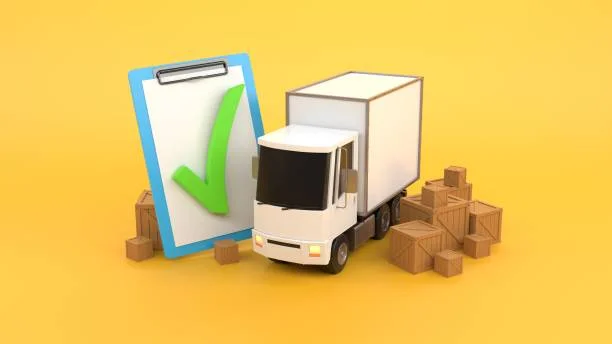Moving oversized items from one place to another sounds simple until you’re actually standing in front of a three-metre wardrobe trying to work out how it’s getting from someone’s bedroom in Bristol to your customer in Leeds without falling apart en route. The theory is straightforward – put thing in van, drive van, take thing out – but the practice involves about fifty complications nobody mentions until you’ve already committed to the sale Transport Oversized Items.
Whether you’re running a furniture business, shifting industrial equipment, or just regularly moving items that don’t fit in normal vehicles, understanding how to transport oversized goods safely protects your stock, your reputation, and your profit margins. Getting it wrong is expensive. Getting it right is surprisingly straightforward once you know what actually matters.
Curious for more? Related posts await to expand your perspective instantly.
What Actually Counts as Oversized
Courier companies have different definitions, which is part of the problem. Something that’s “oversized” to Royal Mail might be perfectly standard to a pallet network. Generally, if it won’t fit through a standard doorway while packaged, or needs two people to lift safely, or requires something bigger than a large van, you’re in oversized territory.
Length matters more than people realise. A 2.5 metre ladder isn’t particularly heavy, but finding courier services that’ll take anything over 2 metres gets complicated fast. Most vans have internal load lengths around 2.7 to 3 metres, so anything approaching that becomes awkward even if it weighs nothing.
Cubic capacity catches people out when multiple dimensions are large. A chest of drawers might be reasonable height and length individually, but add depth and suddenly the cubic size means it dominates half a van’s loadspace. Couriers price partly on space taken, not just weight, which surprises sellers used to small items where weight is the main cost factor.
Awkward shapes create more problems than simple large rectangles. A 2-metre square sheet of glass is easier to transport than an L-shaped desk of similar dimensions because you can actually plan for rectangles. Irregular shapes mean wasted space in vehicles and more potential for damage from having to wedge items in oddly Transport Oversized Items.
The Damage Risks Nobody Mentions Upfront
Movement during transit causes more damage than rough handling, though both are issues. Items shifting in the van during cornering, braking, or accelerating leads to dents, scratches, and breaks even when the driver’s being careful. Proper securing prevents this, but not everyone understands what proper securing actually means.
Inadequate packaging for the journey kills oversized items regularly. The packaging that protected something in a warehouse with forklifts doesn’t necessarily work for road transport. Vibration over 200 miles does things that static storage never does. Corners on cardboard boxes wear through. Strapping cuts into surfaces. Wood crates that look solid develop weaknesses.
Weather exposure during loading and unloading matters more with large items because they’re outside longer. Getting a sofa from a house to a van in the rain means it’s wet, and wet furniture grows mould if it sits in the van overnight before delivery next day. Seems obvious but happens constantly, especially with sellers who’ve never considered the whole journey.
Multiple handling points multiply risk. Your item might get loaded at collection, unloaded at a depot, sorted, reloaded on another vehicle, driven to another depot, sorted again, reloaded, then finally delivered. Each handling is another opportunity for damage. Direct delivery with one vehicle and one set of handlers reduces this dramatically.
Choosing the Right Vehicle and Equipment
Luton vans work brilliantly for tall items with the extra headroom, but they’re rubbish for really heavy stuff because the weight capacity isn’t proportional to the volume. A Luton can hold three wardrobes easily space-wise but might be overweight if they’re solid wood. Matching vehicle type to load characteristics matters.
Tail lifts solve countless problems with heavy items but add cost and time. Some sellers avoid them thinking manual loading is fine, then discover their driver’s trying to shift a 150kg milling machine up a steep driveway with a trolley. Tail lifts aren’t optional for properly heavy goods, they’re essential equipment of Transport Oversized Items.
Proper securing equipment – ratchet straps, furniture blankets, corner protectors – separates professional transport from “hoping for the best.” Budget couriers often lack proper gear and improvise with rope and old blankets. This works until it doesn’t, then you’re dealing with damaged goods and arguments about liability.
Load distribution affects vehicle handling and safety. Stick all the weight at the back of a van and it drives terribly, potentially dangerously. Experienced drivers know how to load for balanced weight distribution. Random bloke with a van who fancies earning some money probably doesn’t, which is why using a specialist large item courier service with experienced drivers matters for anything valuable or difficult.
The Practical Steps That Prevent Problems
Measure everything twice, and actually measure it rather than guessing. “About 2 metres” could be 1.8 or 2.3, and that difference determines whether something fits in a standard van or needs something bigger. Accurate measurements mean accurate quotes and no surprises when the driver arrives.
Photograph items before loading, especially anything valuable or prone to damage. Clear photos of condition at collection protect everyone involved if there’s damage claims later. You can prove the item was fine when collected, driver can show it was fine at delivery, whoever’s responsible gets identified properly.
Test packaging before using it for real. Made a wooden crate for your industrial pump? Great. Did you try picking it up and tilting it to see if the pump moves around inside? Try that before putting it in a van for a 200-mile journey where it’ll experience way more motion than your test.
Plan the route for vehicle size, not just distance. Shortest route through narrow village roads with low bridges doesn’t work for a Luton van. Motorways are boring but they’re designed for large vehicles and don’t have surprise width restrictions. Add journey time for sensible routing rather than forcing drivers down unsuitable roads.
Communicate specific requirements clearly to whoever’s doing the transport. “Needs two people” is obvious to you, but if the driver turns up solo you’ve got problems. “Must stay upright” for certain equipment, “temperature sensitive” for some materials, “time critical” if there’s specific delivery windows. Whatever matters for your particular item needs stating explicitly.
When DIY Transport Makes Sense and When It Doesn’t
Hiring a van yourself works for local moves with items you understand and can handle safely. If you’re in the furniture business and need to move three sofas 15 miles, you probably know what you’re doing and hiring a van for four hours is economical. One-off oversized items to the other end of the country? Probably not worth your time and risk.
Your insurance situation matters when transporting items yourself. Your personal car insurance probably doesn’t cover business use or goods in transit. Hire van insurance covers the van but not necessarily the cargo. Professional couriers have proper goods in transit insurance. If that dining table worth £2000 gets damaged, who’s covering it?
Time and opportunity cost calculations often favour professional transport even when DIY looks cheaper. Eight hours driving to Scotland and back is a full working day you’re not doing other work. Paying someone £200 to handle it while you source more stock or serve other customers might be better business even if DIY van hire is only £100.
The expertise factor gets underestimated. Professional drivers who move large items regularly know tricks for getting awkward things through tight spaces, how to protect items properly, what works and what doesn’t. Your first time moving a 2.5 metre mirror is learning experience; their hundredth time is refined expertise.
Building Delivery Into Your Business Model
Pricing needs to reflect real transport costs, not optimistic hopes about cheap delivery. If large items cost £80-120 to transport properly, build that into sale prices plus margin for your time arranging delivery. Hoping to find cheaper options after you’ve sold items leads to eaten margins and stress.
Offer collection as standard option with delivery as premium service. Lots of buyers can collect themselves or have transport sorted, they just need the option. You save delivery hassle, they save money, everyone wins. Position delivery as convenience premium rather than default expectation.
Develop relationships with reliable transport providers rather than shopping around every time. Known drivers who understand your typical loads make everything smoother. They know how you pack things, what your standards are, how your pickup location works. This efficiency saves time and reduces errors.
Clear terms and conditions about delivery responsibilities prevent arguments. Who’s responsible if item won’t fit through customer’s door? Who pays for failed delivery if customer isn’t available? What happens if delivery date needs changing? Sort this upfront in your terms rather than negotiating every time something goes slightly wrong.
The Reality Check
Oversized item transport will never be as simple as posting a parcel. The physics alone makes it complicated – large heavy things need appropriate vehicles, proper equipment, experienced handling. Trying to make it cheaper or quicker than reality allows usually results in damaged goods and unhappy customers.
Budget options exist but they come with compromises. The cheap quote might involve depot stops, longer timeframes, less care, inexperienced drivers. Sometimes these compromises are acceptable. Other times they’re false economy that costs more fixing problems than proper service would have cost upfront.
Professional transport for valuable or difficult items isn’t extravagance, it’s risk management. The difference between safe arrival and expensive damage claim often comes down to whether someone who knows what they’re doing is handling your items with appropriate equipment and care.
Learning from experience is fine but expensive when every lesson costs you damaged stock and customer complaints. Talking to others who regularly move oversized items, using services that specialise in it, and building proper systems from the start saves money compared to improvising everything and hoping it works out.
Adventure through our content—more stories, tips, and ideas await you.






